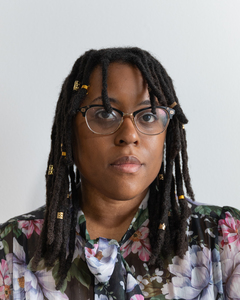A miraculous amount of African culture and influence survived in the Americas through slavery. That must mean elements of pre-colonial African queerness also survive among the subtext of the folk histories and stories I read. I found a story of a woman who comes to ruin, recorded by Langston Hughes, where part of the story was written conversationally with a call and response from the storyteller and audience. Hughes and Hurston both were ones to present a folk story as a conversation for a reason, which led me to glean a new story from only the teller and the audience, back and forth. It was the visual language I needed to find a connection between my own experience as an asexual Black woman in America to that of what I am interpreting as a queering of the main character of the story.
The story itself is not what is so important to me, but the conversational language of the call and response. “To ensure the autonomy of thought and action in the midst of constant surveillance and violence, African Americans constructed a highly developed tradition of social interpretation (Woods 29)” The back and forth of the teller and listener interjecting their thoughts of the main character of the story not only reveals the queerness of this character from the perspective of her community but uses language similar to how my own “Aceness” is attempted to be explained away in the present. There is a dismissal, disbelief, and justification of the audience of the story to be indifferent toward men, that the woman of the story carries herself with that rang familiar to me.
Many asexuals’ identities are written off as phases or can be hidden as religious and/or polite occupancy. Pair this with the dichotomy of hypersexuality and the fictionalized asexual mammy aesthetic that is often balanced onto black women, especially in predominantly white spaces. This is felt exaggeratedly for Black women on the asexual spectrum. To be authentically and queerly asexual outside of a mammy context is something that is viewed as outside of blackness due to the relationship with the plantation block’s need for both the production of more slaves and the desire for distance from the realities of sexual violence. Creating this implied idea that aceness is a white queerness. Black subjects are deemed to be hypervisualized for this almost “invisible” queerness. They are often forced to play into the desexualized other, take up this hypersexualized performance to pass and placate, or exist within the space of the call and response. This work focuses on the nonconformity of this queer identity in the history of Black subjects and black femme bodies in America as a way of confronting the audience with my own lived experience.











